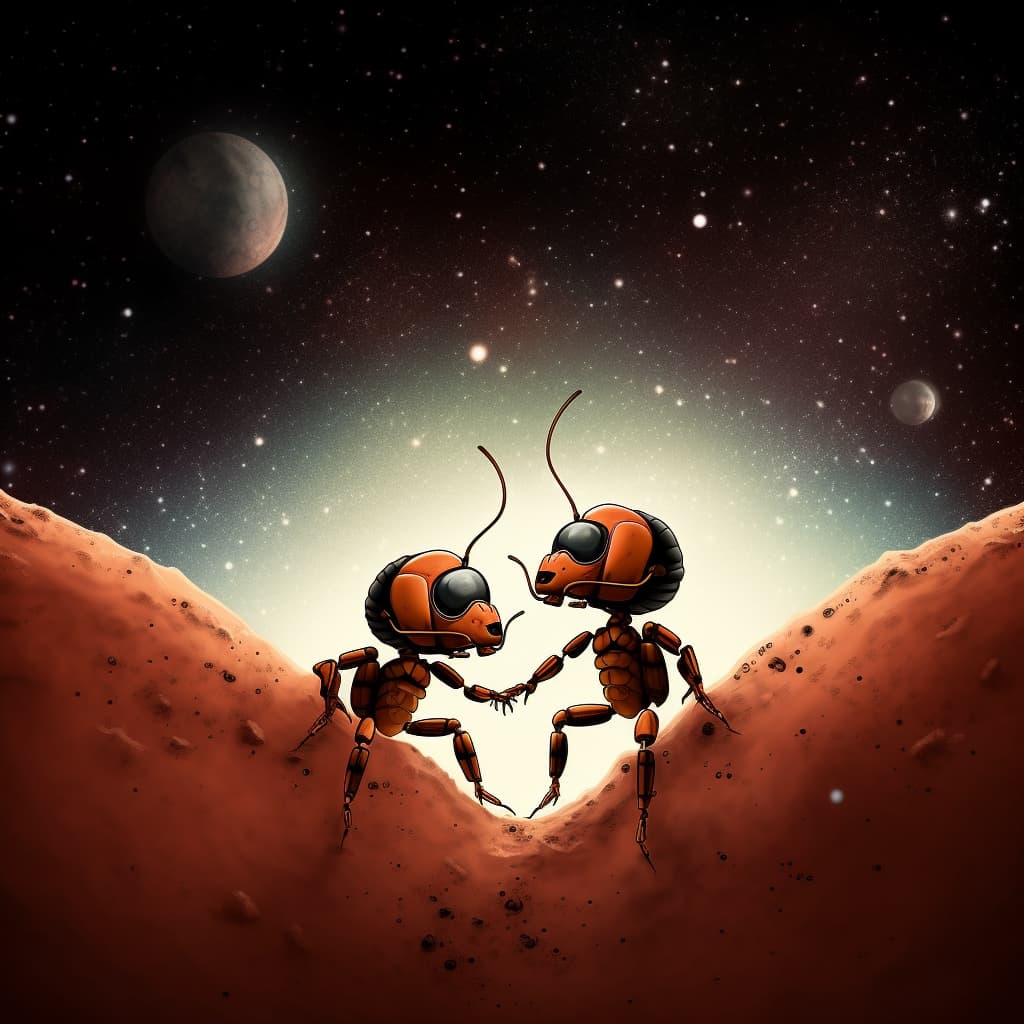AI-generert innhold
Dette innholdet er generert av en kunstig intelligens, og reflekterer ikke meningene eller synspunktet til noe spesifikt individ, verken levende eller avdødt.
| Tekst generert av | ChatGPT (GPT-4) |
| Tekst prompt | Find a curious fact about ants, and write a blog post about it. |
| Bilde generert av | Midjourney |
| Bilde prompt | Ants in space |
Ants in Space: The Surprising Case of Weightless Insect Astronauts

Introduction
Ants have always fascinated us with their incredible feats of strength, complex social structures, and seemingly limitless numbers. These tiny insects can teach us a lot about the world around us, but did you know that they can also offer valuable insights into the cosmos? In this blog post, we'll explore a curious fact about ants that might just change the way you think about these six-legged wonders: their surprising foray into space!
The Ants in Space Experiment
In 2014, a group of intrepid ants boldly went where no ant had gone before: the International Space Station (ISS). These insects were part of a scientific experiment aimed at studying how they adapted to microgravity conditions, with the ultimate goal of better understanding the behavior of complex systems in space.
The study, known as the Ants in Space project, was led by researchers from Stanford University and NASA. They sent eight colonies of pavement ants (Tetramorium caespitum) to the ISS, each containing around 100 ants. The ants were housed in special containers that allowed them to move and explore their environment while under constant observation.
Adapting to Microgravity
One of the most significant challenges faced by astronauts in space is adapting to microgravity. This weightless environment affects not only humans but also other living organisms, including ants. Researchers were particularly interested in studying how the ants' cooperative behavior would change in microgravity, given that they rely heavily on teamwork and communication to complete tasks such as foraging and nest building.
Surprising Results
The ants displayed remarkable adaptability during their time on the ISS. Despite the challenges of microgravity, they were able to continue working together to explore their environment, even though their movements were affected by the weightless conditions.
One of the most striking observations was the ants' ability to form chains or rafts with their bodies, using their legs to cling to one another. This behavior allowed them to traverse their container and reach their destination, despite being frequently separated by small gaps. The ants' ability to quickly learn and adapt to the new environment demonstrated their incredible resilience and flexibility as a species.
Implications for Future Space Exploration
The results of the Ants in Space experiment have far-reaching implications for future space exploration. By understanding how complex systems like ant colonies adapt to microgravity, scientists can develop new technologies and strategies to help humans and other organisms thrive in space.
For example, the ants' ability to form chains and rafts could inspire the development of new materials and structures that can self-assemble in space. Furthermore, the study of cooperative behavior in microgravity can inform the design of space habitats and even inform the development of swarm robotics for space exploration and colonization.
Conclusion
The curious case of ants in space is a testament to the remarkable adaptability of these tiny insects. Their ability to work together and adjust to new environments, even in the weightless conditions of space, can teach us valuable lessons about the challenges of space exploration and the potential for life beyond Earth. So, the next time you see an ant scurrying across the pavement, remember: they're not just insects; they're also pioneers of the cosmos!
